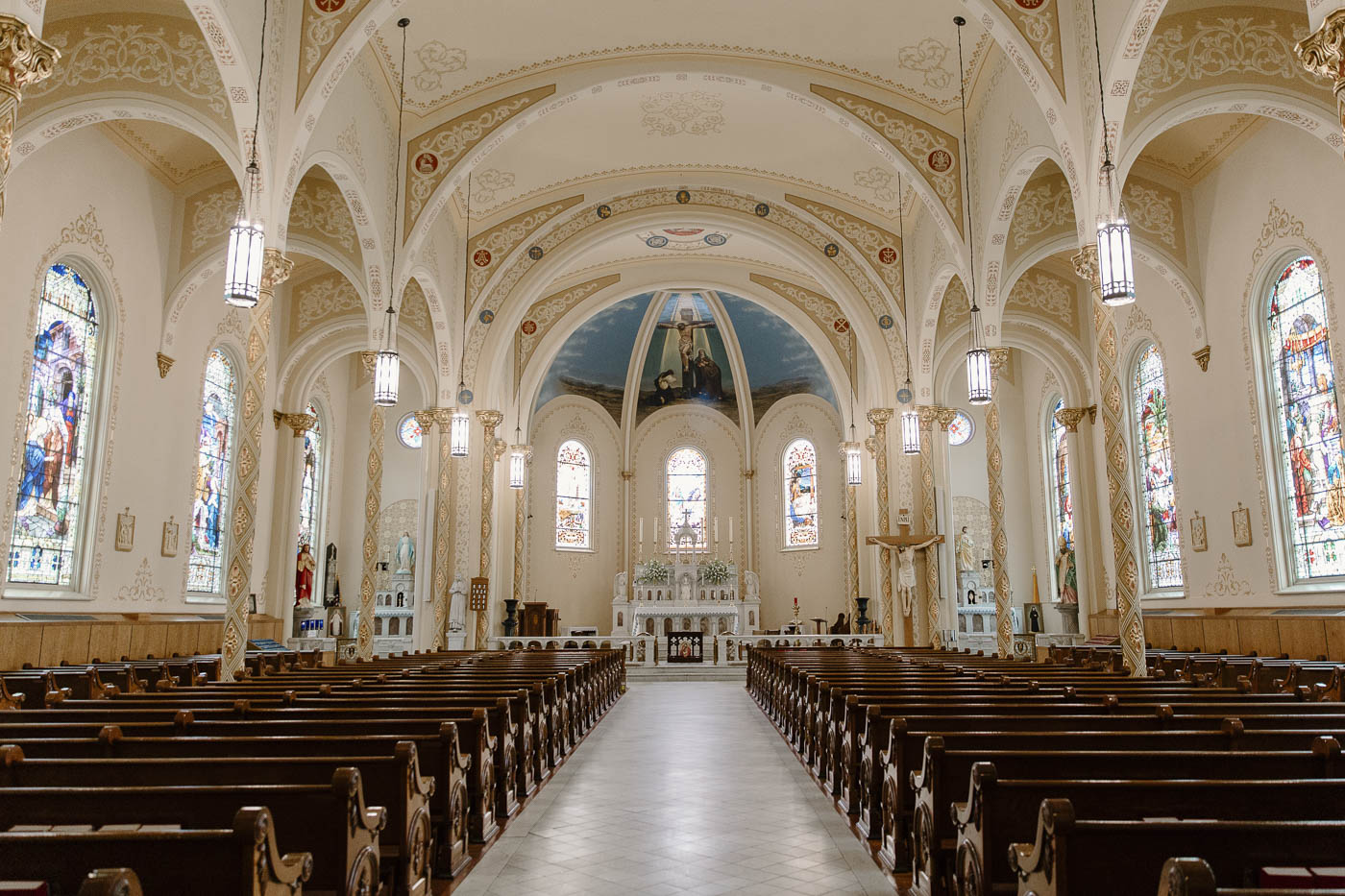One of the perks of being a Catholic wedding photographer is being very familiar with the way a Catholic wedding Mass works and being able to adjust to the unique quirks and scenarios of a Catholic wedding day with ease (check out my previous post about why Catholic brides need a Catholic photographer for their wedding for all the details on that). ANOTHER perk is that I know and can tell you about many of the cool, Catholic wedding Mass traditions you can incorporate into your wedding Mass to make it even more uniquely your own. I learned about a lot of these when I was planning my own wedding back in 2019 and I try to share them with all my Catholic couples! How many times in your life will you get to have a say (to a certain extent) in what happens during the Mass??

Croatian Crucifix (or Marriage Crucifix)
I absolutely love this tradition and incorporated it into my own Catholic wedding Mass! The sacrificial love that the crucifix represents is a perfect representation for the vocation of marriage. It’s called the marriage crucifix vs. a wedding crucifix because it’s a reminder of the lasting covenant the couple is entering into, not just a wedding day.
I tell my couples who plan on incorporating this tradition to begin by picking out a crucifix that they would like as the family crucifix in their home. During the wedding Mass, as the couple approaches the altar, the priest blesses the crucifix and says to the couple, “You have found your cross and it is a cross to be loved, to be carried, a cross not to be thrown away, but to be cherished.” Then, during the exchange of vows, the groom holds the crucifix in his right hand and the bride places her right hand on the top of the crucifix uniting their hands together as they say their vows.
St. Augustine said the cross is a “marriage bed [in which Christ] united himself with [His bride, the Church].” This centuries old tradition is linked back to a small town in Bosnia-Herzegovina called Siroki-Brijeg, which reportedly remains the only place in the world with a 0% divorce rate. It’s not necessary to include in your wedding, but it is certainly beautiful and a meaningful way to begin your marriage.
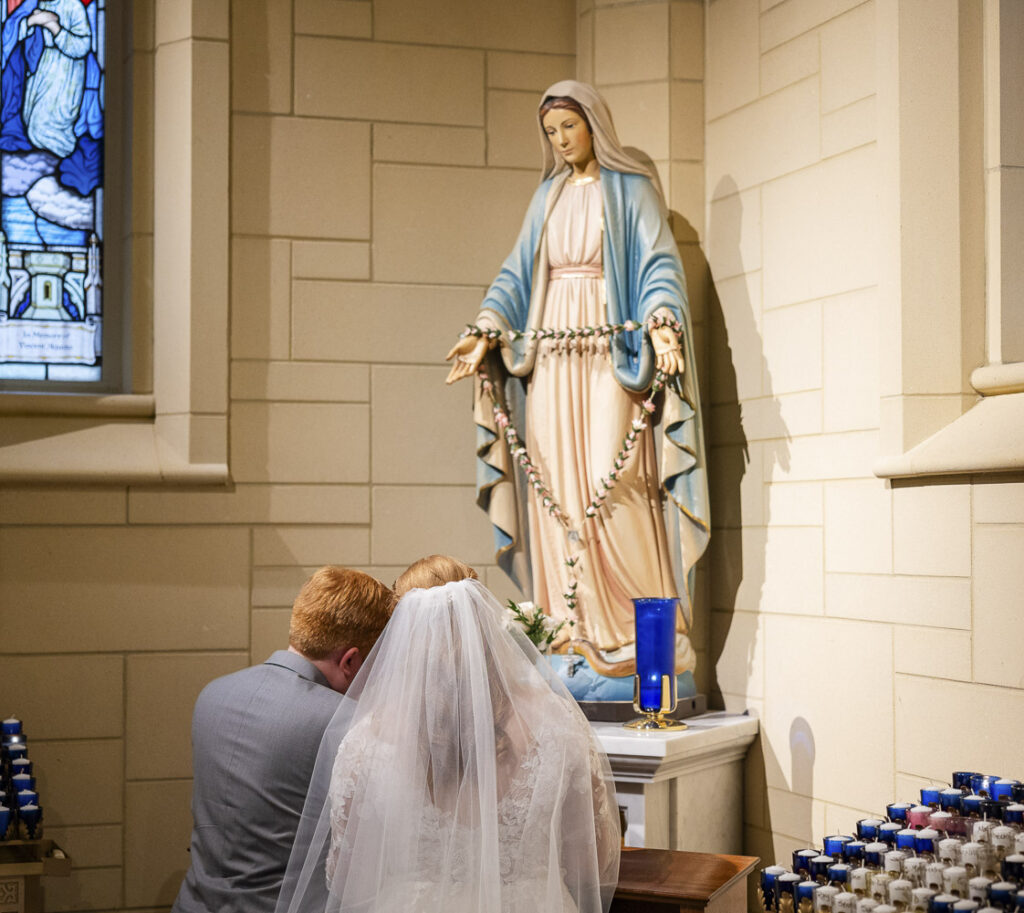
Bringing flowers or praying a consecration prayer during the Catholic Wedding Mass to Mary
In some places it is customary for the bride (or the bride and groom together) to place a bouquet of flowers before a statue or shrine to the Virgin Mary (assuming one is present in the Church). This is fairly common among the parishes in my diocese (maybe it’s not in yours!). During your Catholic wedding Mass, this happens after Holy Communion, and the Ave Maria or Salve will be sung while the couple prays in front of the statue.
This tradition recognizes the special role that Mary has as the mother not only of God, but of the Church and all the faithful (see Catechism of the Catholic Church 963-965). It is natural, then, to request that Mary pray for you as you begin your own family. Some couples I know will do a Marian consecration leading up to their wedding day, and pray the final consecration prayer during this time.
You can also opt to honor your own mothers by taking a flower from the bouquet and handing it to your mother and thanking her for her motherhood and all the ways she helped you get to this moment in your life!
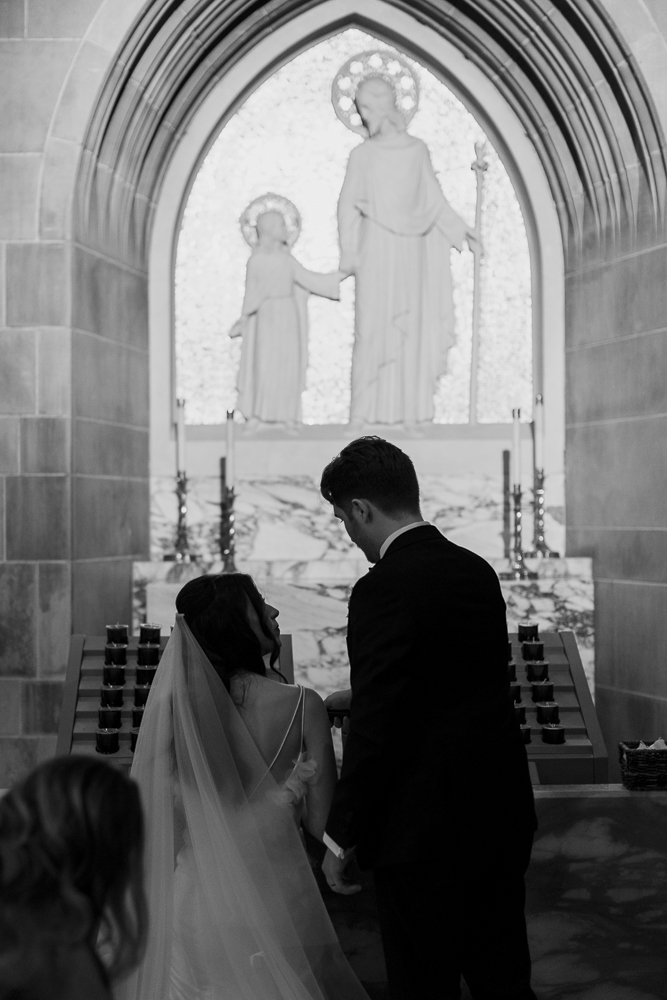
Consecration and/or flowers to St. Joseph, Holy Family, etc
Similarly to the Marian flowers, I’ve noticed that it’s become more of a thing for couples to also consecrate themselves/bring flowers to St. Joseph or the Holy Family during their Catholic wedding Mass. St. Joseph is a special patron for many people, and many churches have a statue or shrine dedicated in his honor. It can be as simple or prayerful as you like! Typically it takes place after Holy Communion as well. If you get married on one of St. Joseph’s feast days or the feast of the Holy Family, you might want to incorporate this into your wedding.
If you’re interested in learning more about the Consecration to St. Joseph, check out this website.
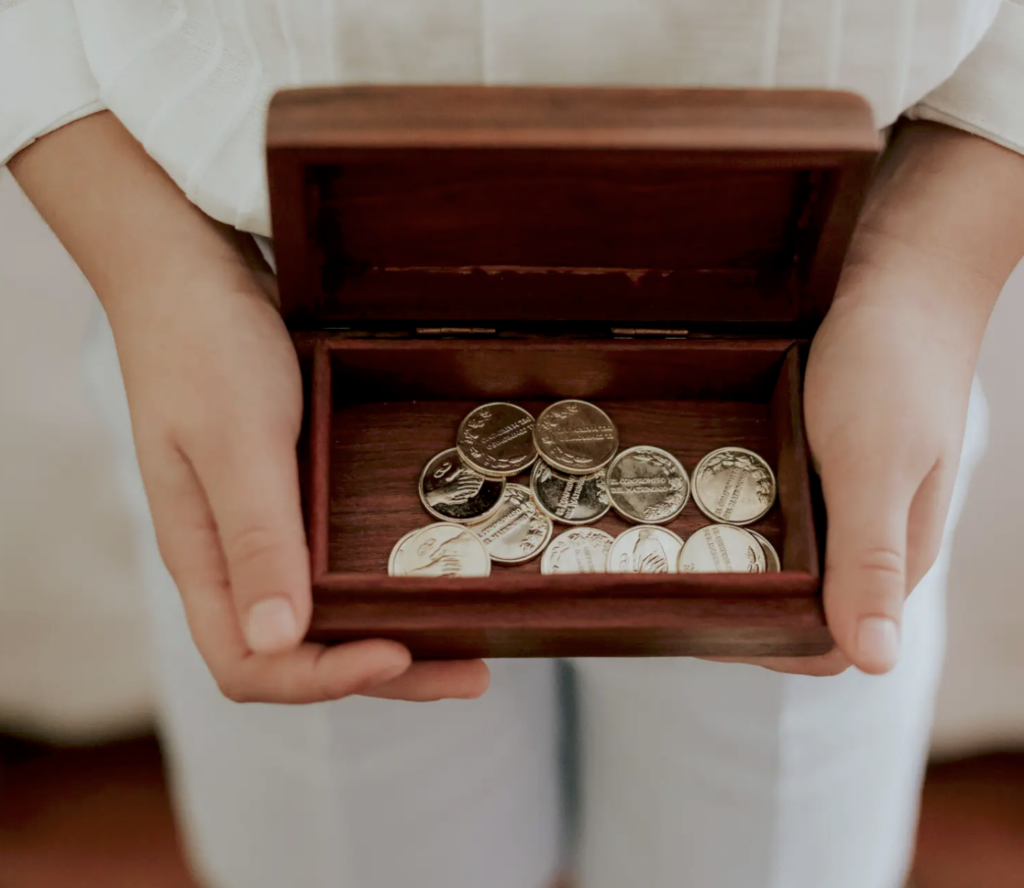
Las Arras Matrimoniales
These gold or silver coins are gifted from the wedding godparents (los padrinos y madrinas) or are a set of coins that have been passed down through the family.
During the Mass, the priest blesses the coins and then places them in the husband’s hands first, who then places the coins in his wife’s hands. Then the coins are often dropped to the floor. Typically there are 13 coins exchanged, 12 gold and 1 platinum, thought to represent the 12 months of the year. The extra platinum coin is meant to be shared with the less fortunate. One spouse presents the coins to the other to symbolize the prosperity of the marriage and the shared responsibility of life and finances.

Rosary or Patron Saint medal on bouquet
You can opt to wrap your bouquet with a yours or a family rosary as a way to have Mary by your side on your wedding day, or you can pin a favorite patron saint medal onto the bouquet ribbon. This can be a great alternative for brides getting married at churches who don’t have a statue or shrine of their favorite patron saint!

El Lasso
The wedding lasso rosary, or “El Lasso” is more popular in Mexican, Filipino, and Spanish communities. This tradition dates back to the 14th century and the lasso itself can be a rope, oversized rosary, or a floral rosary. It is a symbol of unity and represents an agreement to share the responsibility of the marriage and raising of a family.
After the couple has exchanged their vows, their wedding sponsors (witnesses) called el padrino and la madrina, place the rosary around the couple’s shoulders, starting with groom’s shoulder and then the bride’s shoulder, to form a figure eight shape. The priest recites a prayer, similar to the following: “Let the union of binding together this rosary of the Blessed Virgin Mary be an inspiration to you both. Remember the holiness necessary to preserve your new family can only be obtained by mutual sacrifice and love.” The couple wears the lasso throughout the remainder of the service. At the end of the ceremony, the lasso is removed by the priest or by the wedding sponsors who placed the lasso around the couple. The figure eight shape of the lasso represents infinity and that there is end to the covenant the couple has entered into.
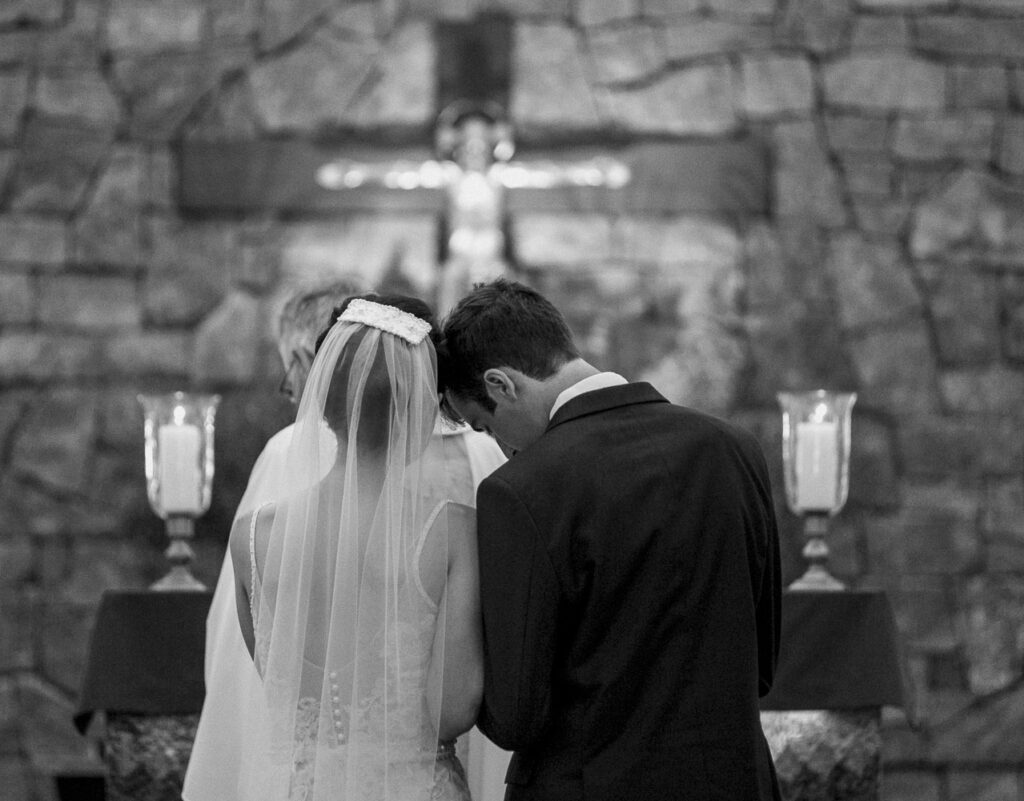
Other Catholic wedding Mass traditions
First, let me preface these with the fact that you’ll need to chat with the priest celebrating your Mass before you can opt to include them. Some churches might have restrictions in place that don’t allow these traditions or exceptions or your priest might not feel comfortable with them. Always a good idea to check first!
Like any special Mass, your nuptial Mass will have three readings and Psalm: the First reading (with the exception of the Easter Season) will be from the Old Testament, the second reading from the New Testament, and then a reading from one of the four Gospels. The Order for Celebrating Matrimony offers several options from Scripture that particularly express the importance and dignity of marriage. You were probably handed this list by a church lady when you picked out your wedding date or saw them listed in your marriage prep book. However, you may choose to go outside of these options, as long as at least one reading explicitly speaks of Marriage (and it’s okay with your celebrant!). That’s a fun fact that many Catholic brides don’t know! I recommend that if you go this route, that you and your future spouse prayerfully pick out the readings together, that you don’t shy away from the readings that say challenging things necessarily, and that you spend time praying Lectio Divina with the readings you choose leading up to your wedding day. Some of my best friends opted into having the Crucifixion gospel read at their wedding because they wanted to remember the significance of sacrificial love for their marriage.
During Holy Communion, you and your spouse can minister the Precious Blood to each other, even if you aren’t trained as extraordinary ministers. My husband and I were told about this tradition by the priest that celebrated our wedding Mass. We agreed that it was an image of the way we wanted to serve each other in our marriage – “this is My blood, given up for you.” Again, check with your priest if it’s okay with him first!
If you and your spouse to be can’t narrow down to one or two saints to dedicate your marriage to, you can create a personalized litany of saints to be sung during your wedding Mass! Talk to your musician(s) and create a litany with saints that you love and want to pray for you, and have it sung during or after Communion.
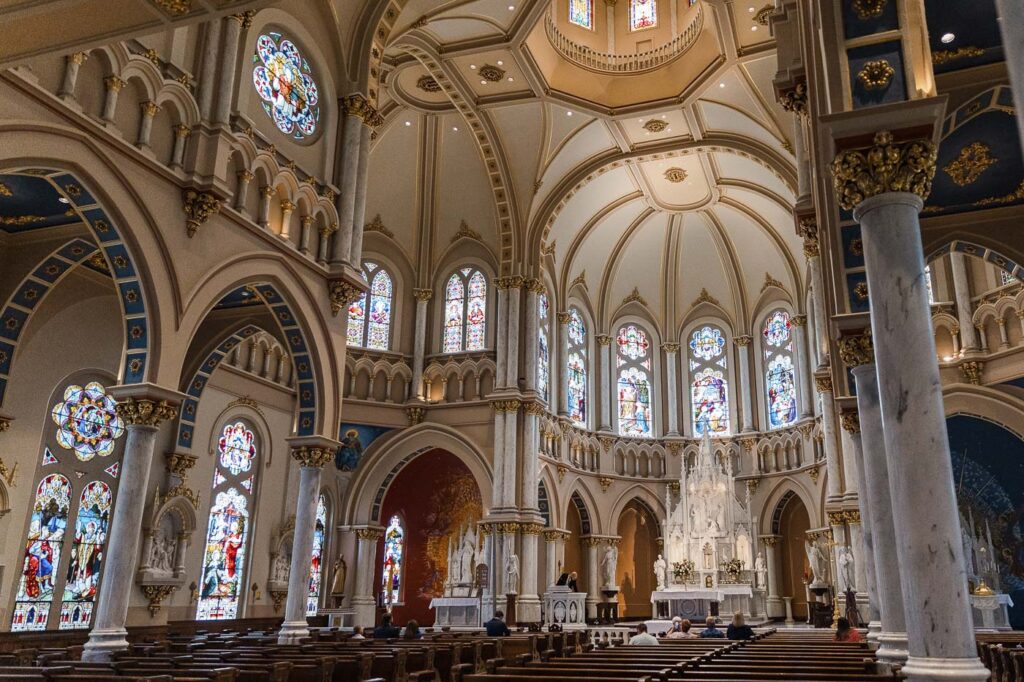
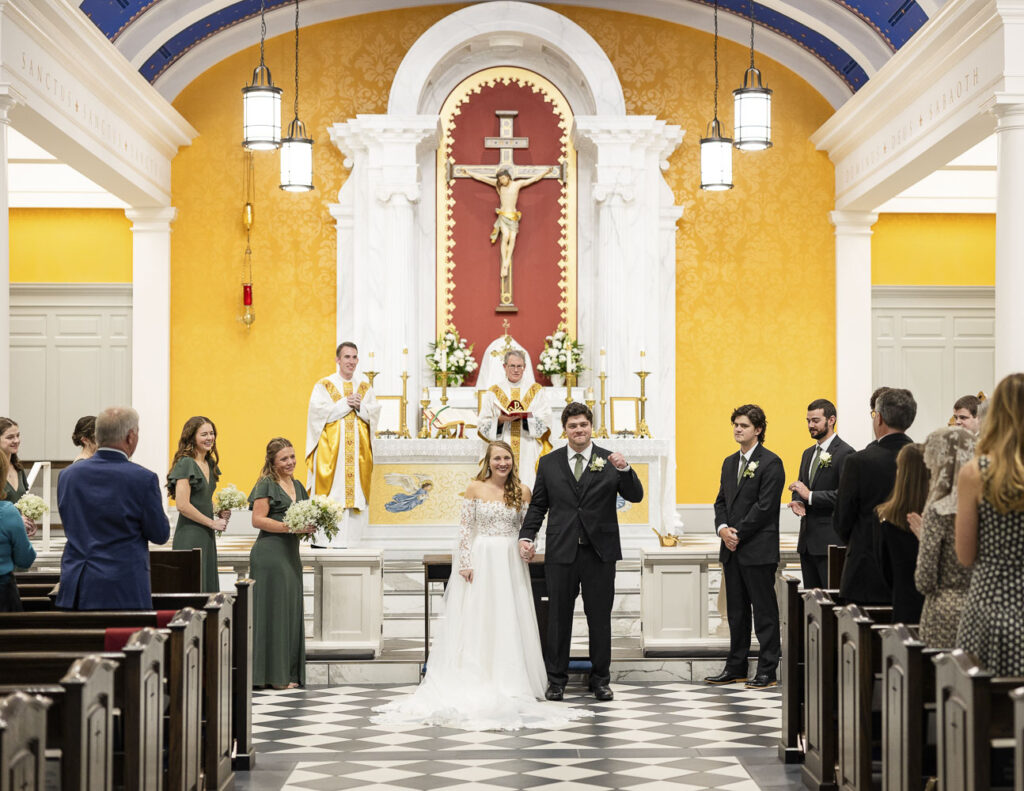
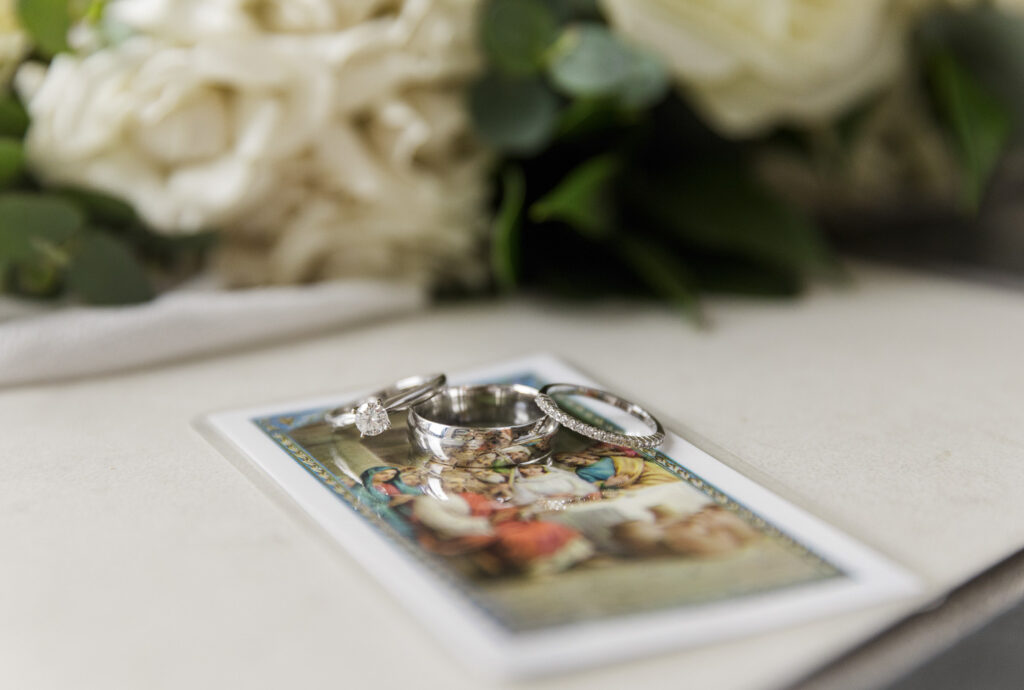
At the end of the day, remember that no matter what you want to incorporate into your wedding Mass, it’s important to make sure that your wedding “reflects the Lord’s blessing on your love”, in the words of Pope Francis. Ultimately your wedding day is about the willing renunciation of your own will and the salvation of your soul and your spouse’s. Don’t let the little things stress you and let go of the frustrations with certain church specific restrictions. It’s all preparing you for the long, beautiful cross of marriage!
Looking for a Catholic wedding photographer? I photograph weddings all over the United States. Check out my website, my offerings, and more by clicking here!
Catholic, Catholic Wedding, weddings, wedding tips, traditions, Croatian Crucifix, St. Joseph Consecration, Marian Consecration, El Lasso, Las arras
